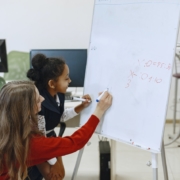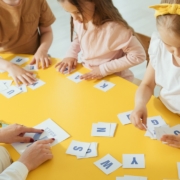Understanding Addition for First Grade Math Lesson Plan
Lesson Title:Understanding Addition for First Grade Math
Lesson Objectives:
1. Students will be able to identify and write the symbol for addition (+).2. Students will be able to understand the concept of adding two or more numbers together to find a sum.
3. Students will be able to solve basic addition problems with numbers up to 10.
Materials:
Introduction (10 minutes): Begin the lesson by asking the students if they know what the + symbol means. Write the symbol on the board and ask if anyone can tell you what it is called. Explain that the + symbol is the symbol for addition and it means to put two or more numbers together.
Direct Instruction (15 minutes): Using manipulatives, show the students how to add two or more numbers together. Start with small numbers (e.g. 1+1, 2+1, 3+1) and have the students count the manipulatives as you add them together. Write the addition problems on the board and have the students say the numbers aloud as they count.
Guided Practice (20 minutes): Provide the students with worksheets or activity pages that have basic addition problems. Have the students work in pairs or small groups to solve the problems using manipulatives. Walk around the room and offer assistance as needed.
Independent Practice (15 minutes): Provide the students with additional worksheets or activity pages for independent practice. Encourage the students to use manipulatives to help them solve the problems.
Closure (10 minutes): Have the students share their answers with the class and discuss any problems they found challenging. Review the + symbol and the concept of adding two or more numbers together. Remind the students that they can always use manipulatives to help them solve addition problems.
Assessment: Observe the students during the independent practice and note their ability to solve basic addition problems with numbers up to 10. Collect their worksheets or activity pages and use them to assess their understanding of the concept of addition.
Note: It is important to provide students with enough practice and repetition to master the concept of addition. It is also important to use a variety of manipulatives and activities to make the learning experience more fun and engaging.










